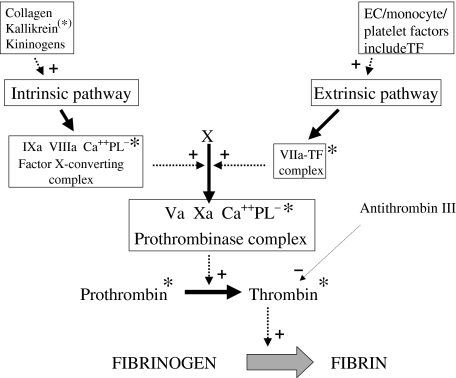Fig. 1.
A summary of the coagulation pathways. Only a few important stages are shown. Fibrinogen is converted to fibrin by the action of thrombin, which is generated by the action of the prothrombinase complex (containing factor Xa) on prothrombin. Two cascades can lead to the activation of factor X: the intrinsic pathway, promoted by a variety of factors, including collagen (exposed in the vessel wall), kallikrein (derived from prekallikrein*), and kininogens; and the extrinsic pathway, initiated by factors derived from endothelial cells, monocytes or platelets, including tissue factor (TF). The whole process should be envisaged as taking place at the surface of one of these cells, which, when activated, is a source of anionic phospholipid. Solid arrows indicate pathways. Dashed arrows indicate promotion (+) or inhibition (–) of a pathway. Asterisks indicate potential sites of action of antibodies in APS.

